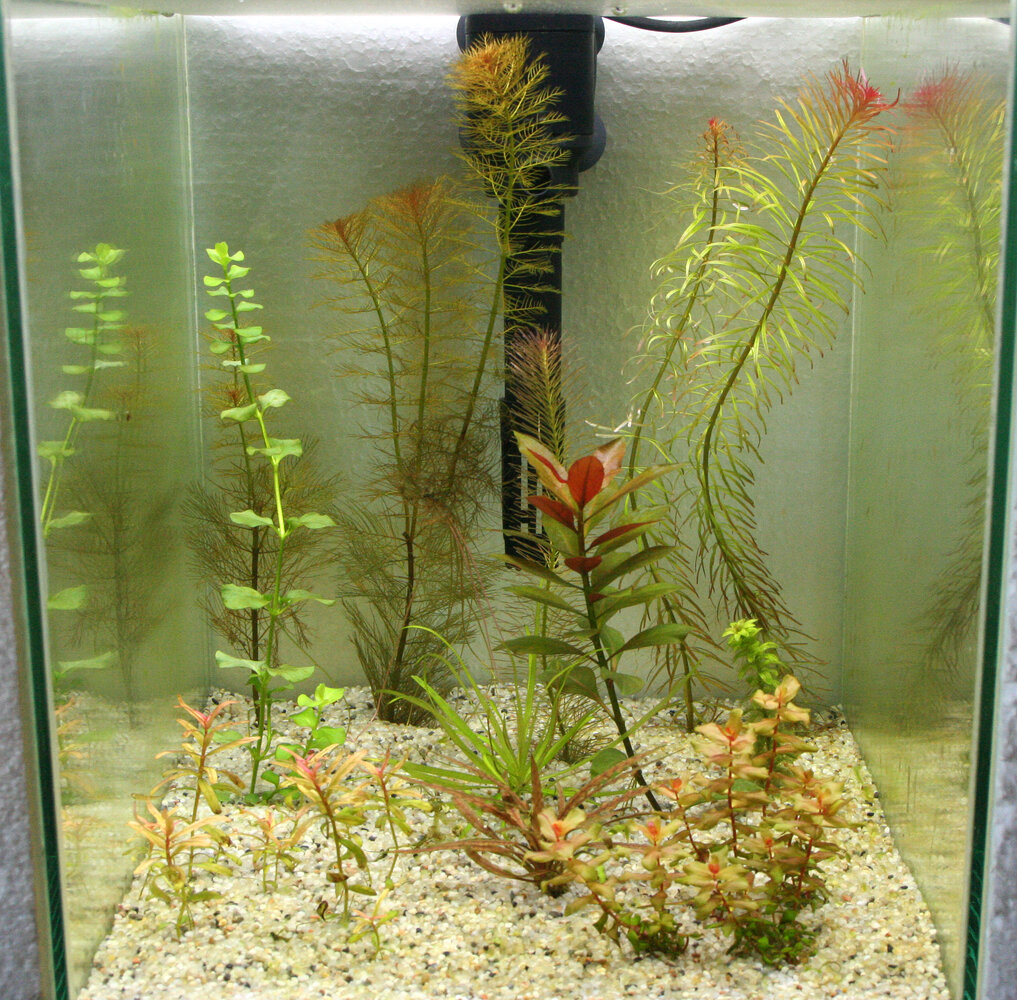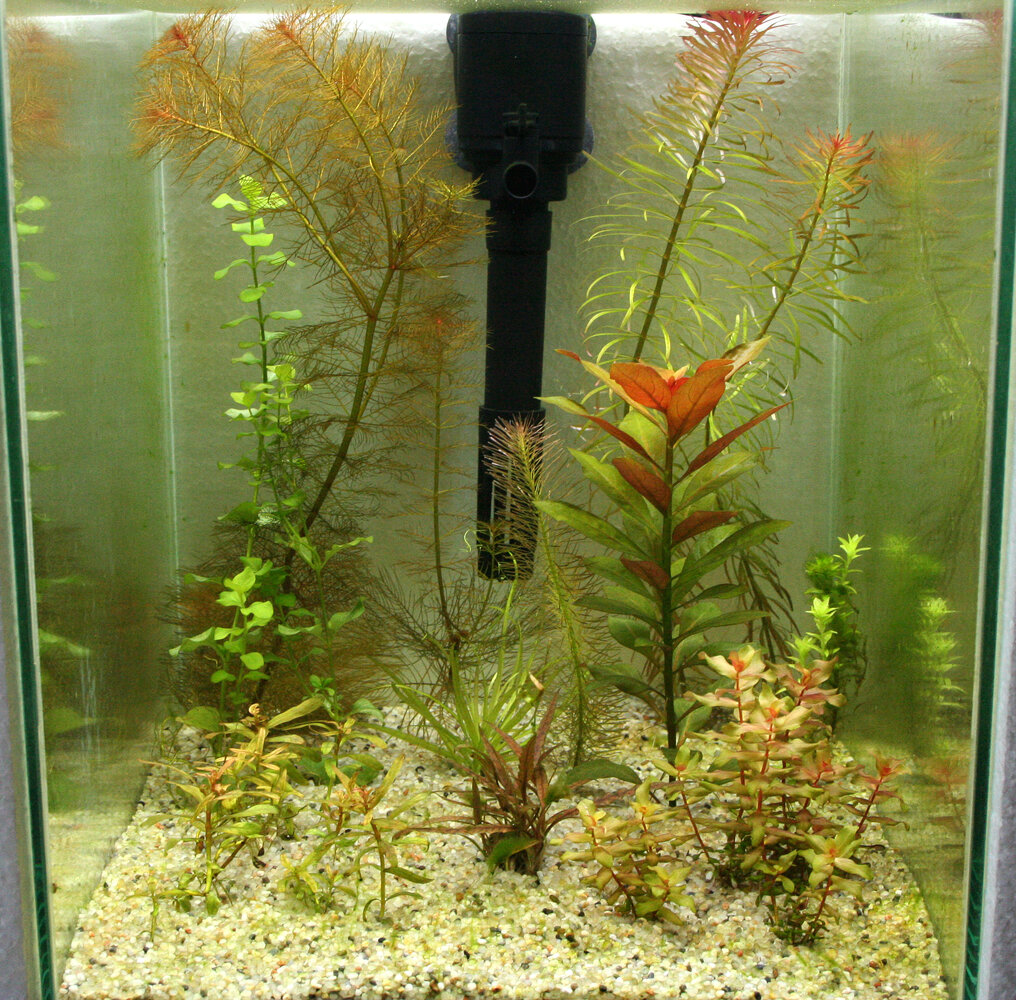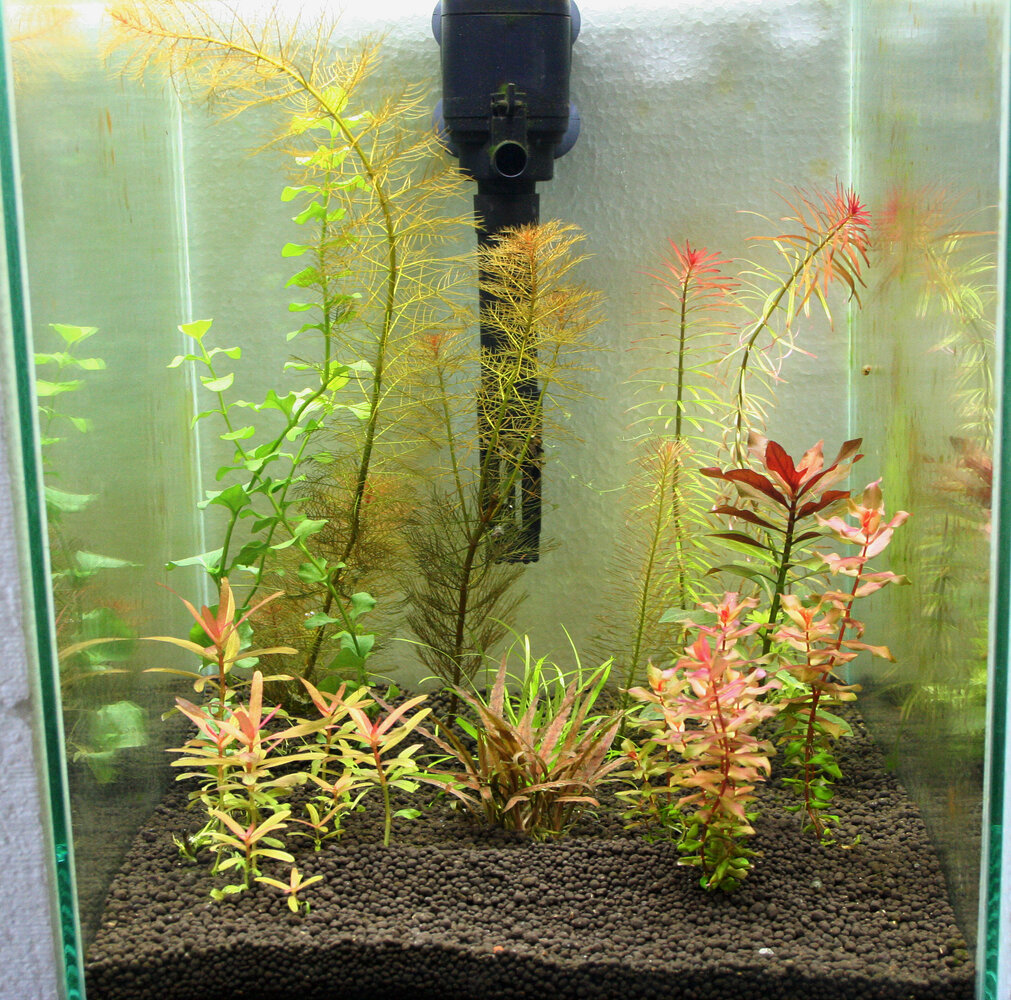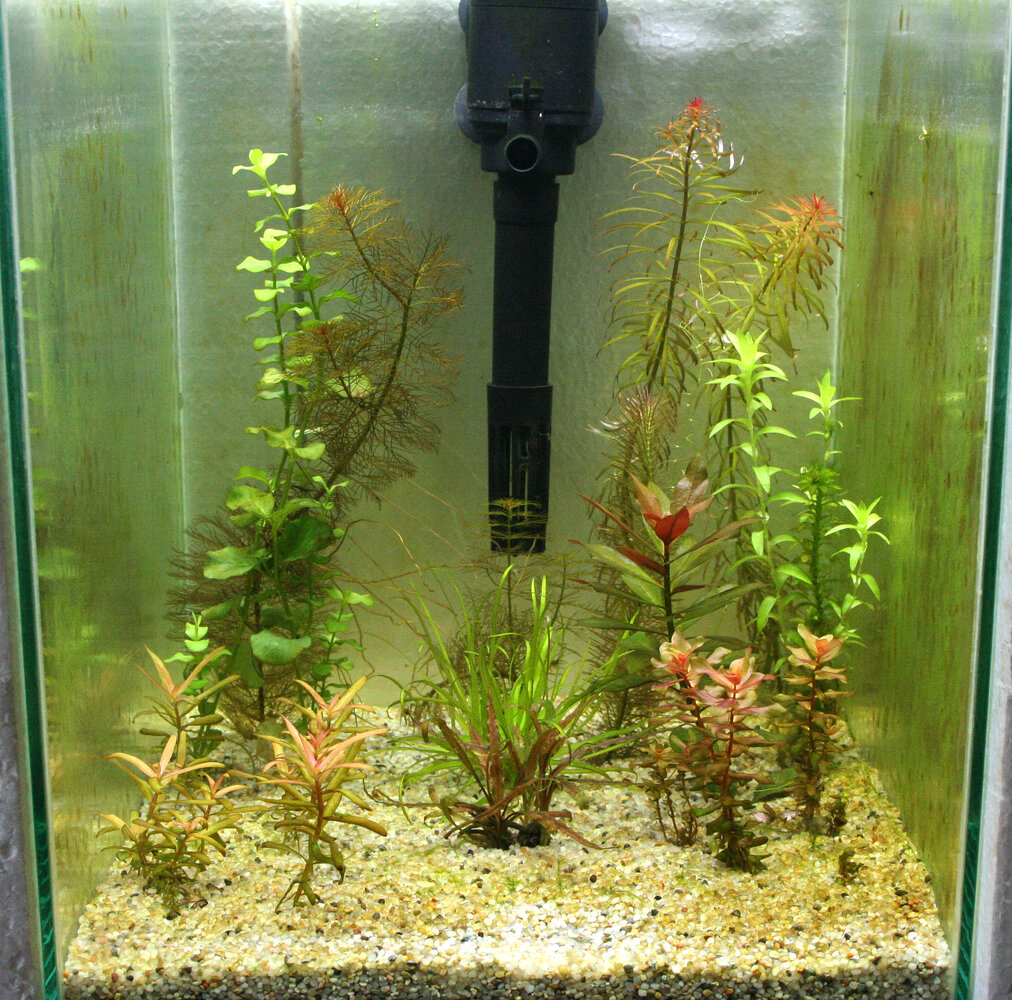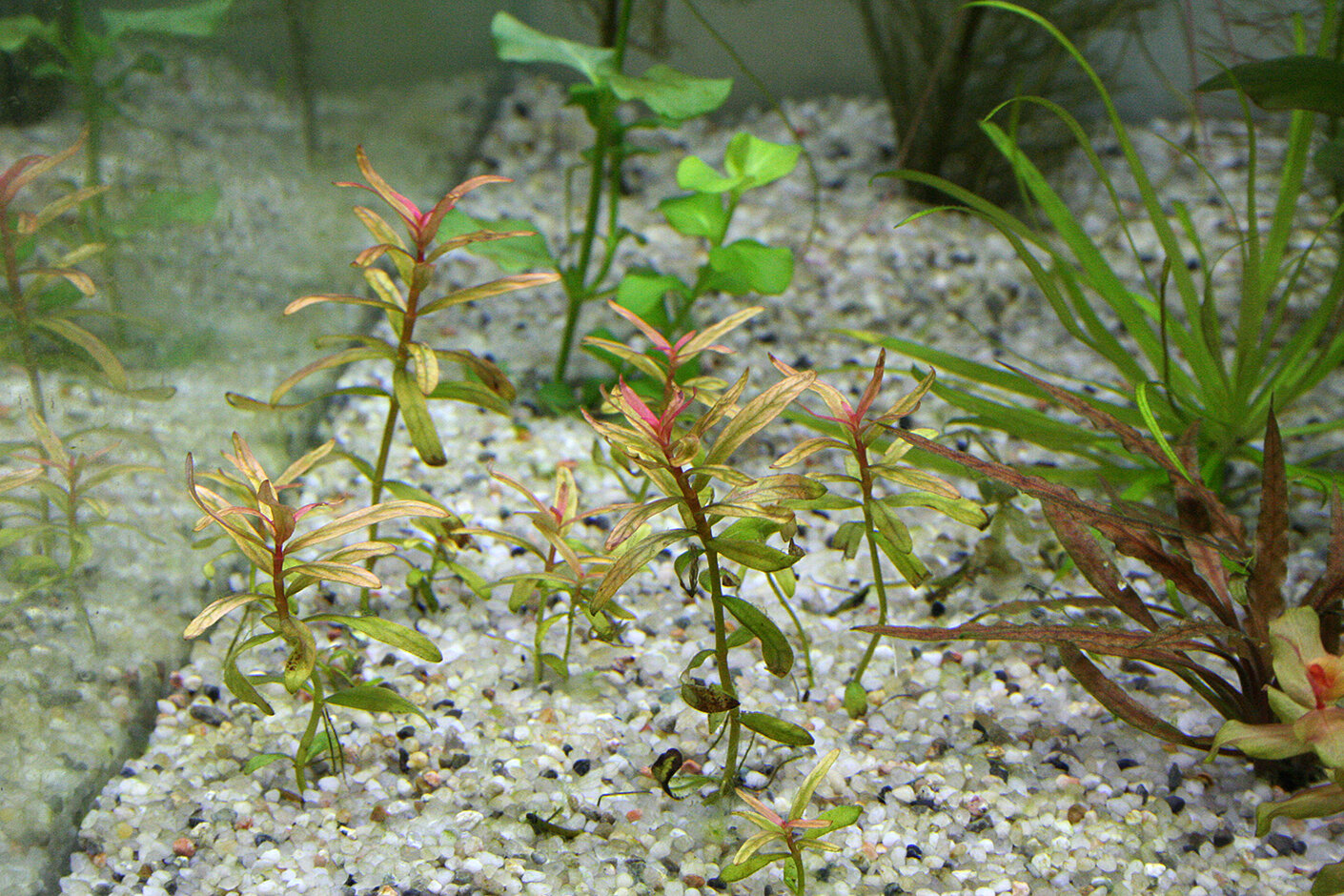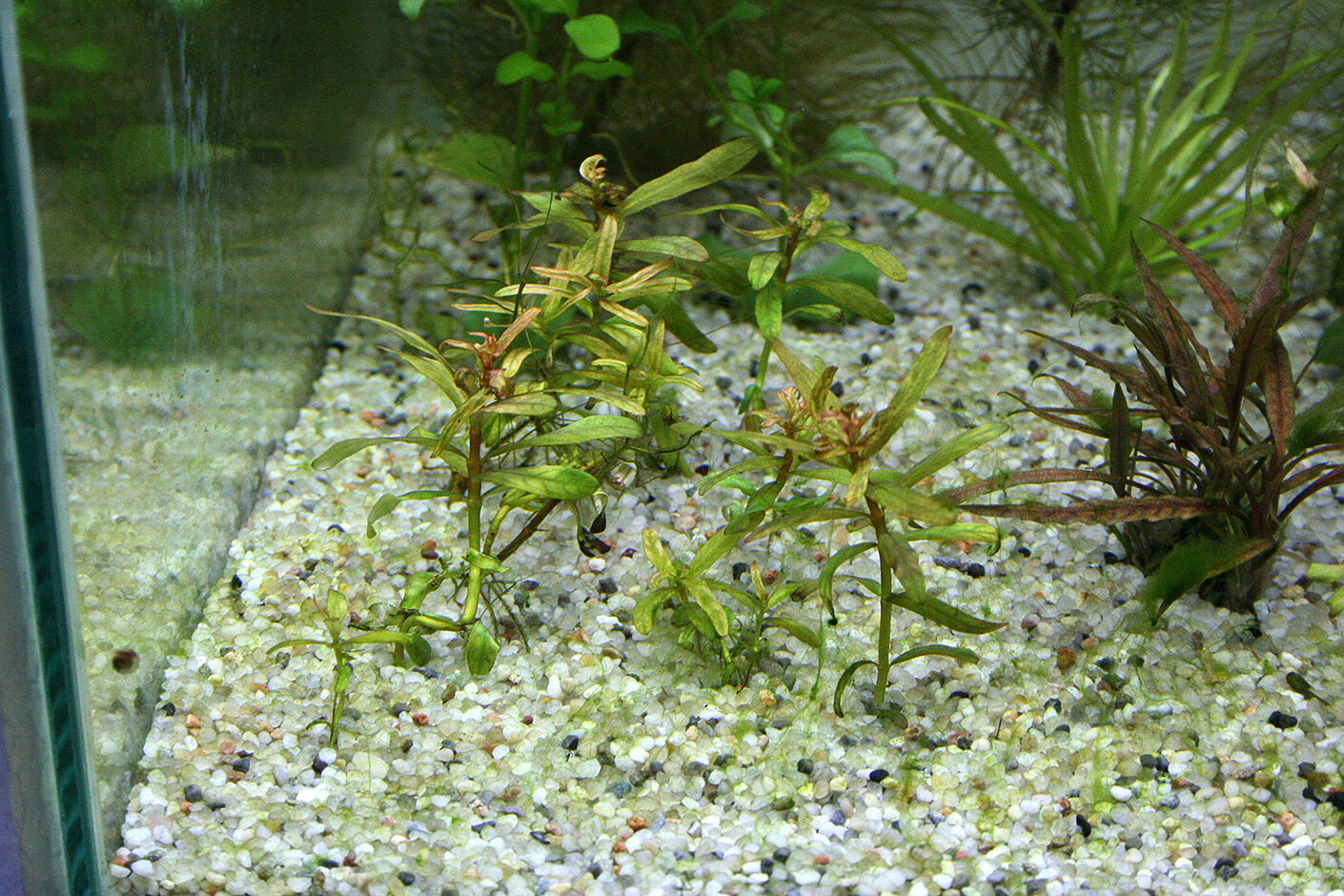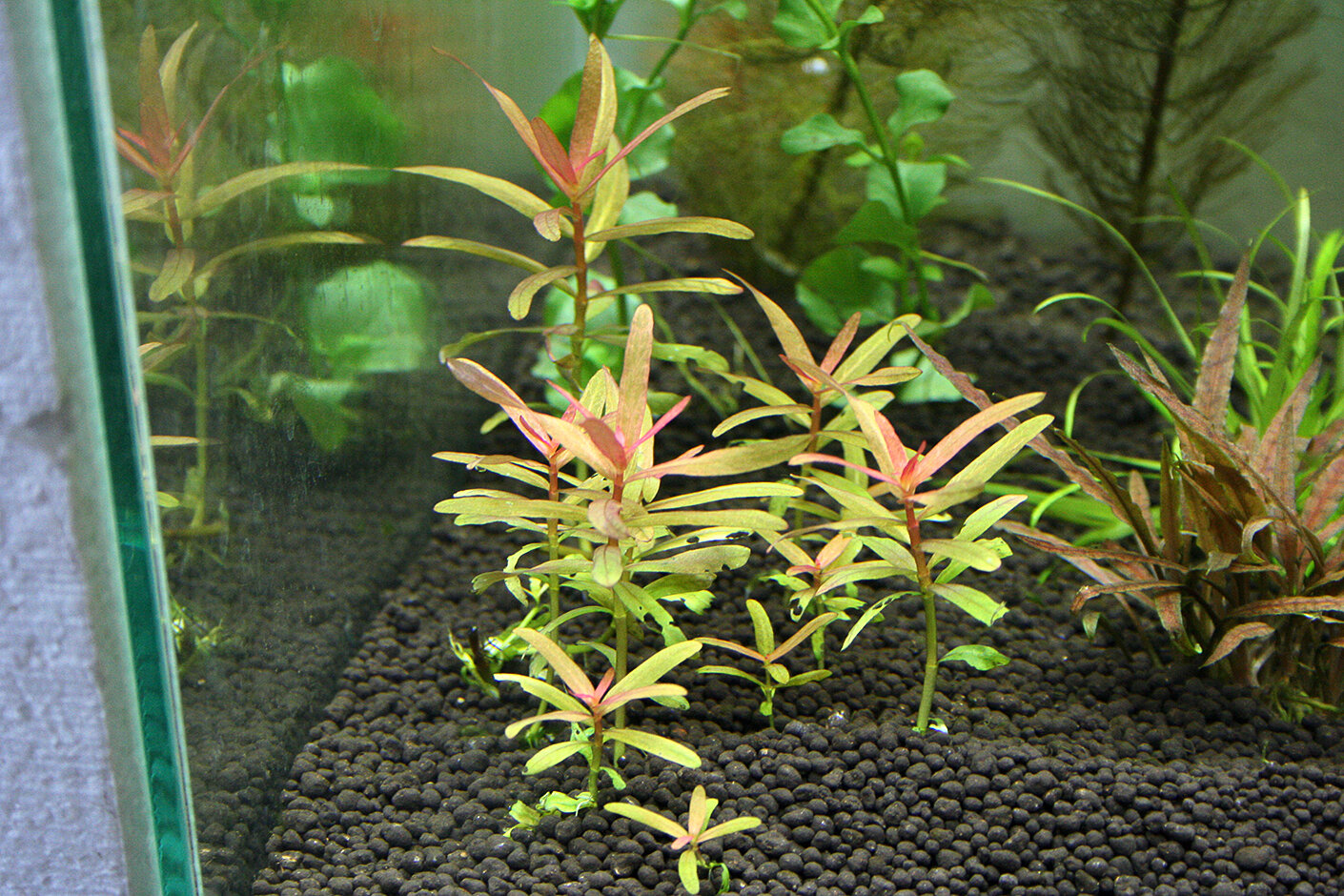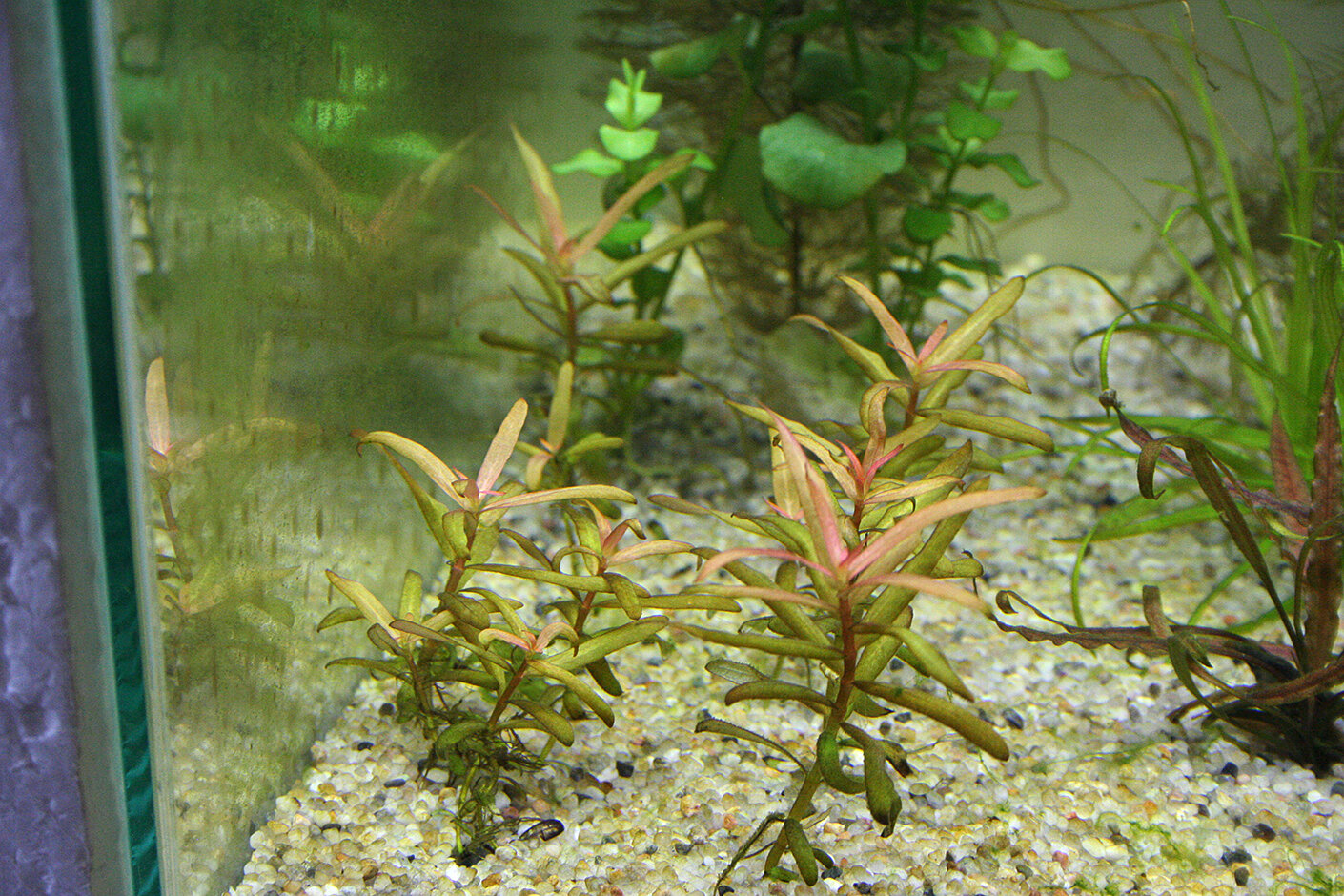unless the dark soil is creating better contrast for the photo. Is that the case viewing them in person @_Maq_ ?
Even when viewing in person, the comparison is somehow tricky. What strikes me (and you probably can't see) is the clarity of water in tank C. Tank A is also very clear, while tanks B and D not so much.
The Ammannias look far the best in the aqua soil (C).
Yes, they do. But they show no deficiency in D, as well. And in A, there have been strong signs of some problem (probably iron) but the tops now look promising. For unknown reasons, in tank B
Ammannias are stunting.
Hi @_Maq_ I wonder if an initial high(er) dose of NH4 with (cheap) plain silica sand would more or less yield the same result as using (expensive) aqua soil. In addition to NH4, what else will aqua soil provide?
Would like to hear your thoughts on this.
I rather think not. Maybe you can recall I have made some tests comparing high/low dosing and the results were less than persuasive. I tend to believe the benefits of aquasoil have more to do with general physico-chemical properties. Clays, humic substances, their adsorption qualities, improved root creation... I can only guess.
But you, guys, don't be too focused on
Ammannias. If you ask me, I agree, yes, on the whole, tank C is leading the crowd. But by insignificant margin. We've got ten species here, mostly quite demanding ones, and they are doing well, with very minor exceptions. That's a feat in itself, I think. Aquasoil is perhaps 5 % better, but we should not forget about the remaining 95 %! There's not much to invent on plain silica sand, but given the moderate lighting, no CO2 enhancement, it's the water flow (quite intensive) and namely the water composition which should draw your attention, I believe. Don't you think so?
Anyway, the test is not closed, yet, and we shall see (and know) more, perhaps, in upcoming weeks.
(though we don't know what's in the secret tank D - lets call it the 'Sheep S#@t Tank' 😂)
Not secret any more.
what are the NO3 levels on all the tanks? I apologize if I have missed this information somewhere.
0.5 mg/L.


